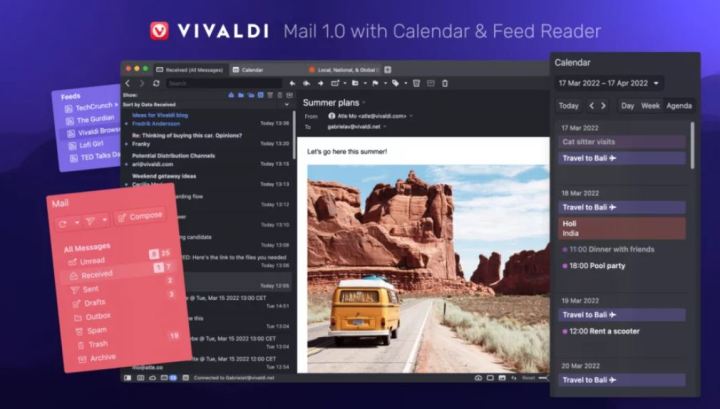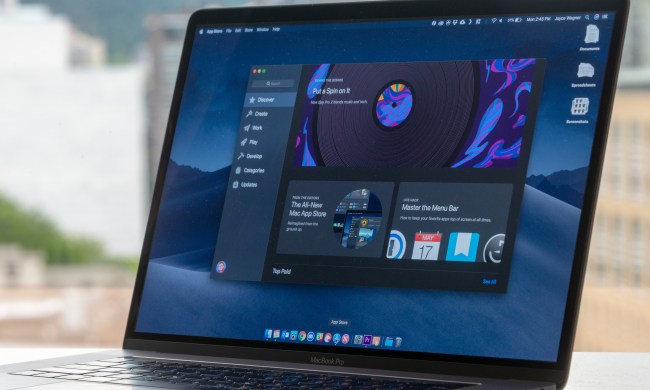Vivaldi has just released an update introducing a number of useful features that are built into the browser itself.
Starting with today’s patch, the browser features a full-blown email client, as well as a calendar and feed reader. Should Vivaldi’s competition begin to worry?
Vivaldi is a smaller browser that many users may have not even heard of just yet. Seeing as the market is still dominated by Google Chrome, Firefox, Edge, and Safari, some stat counters don’t even register Vivaldi and simply lump it in with other similar browsers. However, today’s update just might become the push that Vivaldi needed in order to gain a bit more interest from the internet at large.
Instead of utilizing separate email clients such as Microsoft Outlook or resorting to using Gmail and Google Calendar, Vivaldi users can now access all of these functionalities from within the browser. The feature, called Vivaldi Mail 1.0, sets out to do more than just be a built-in email client — which makes sense. After all, both Gmail and Outlook can be used through the browser, and accessing them is as easy as clicking a bookmark. That’s why Vivaldi seems eager to stand out a bit by making your emails easier to manage.
Perhaps the nicest feature provided by Vivaldi Mail is the fact that you can combine all of your email services into one, be it a Gmail, Outlook, or Yahoo account. Vivaldi indexes all your emails, meaning that you can go back to them when you’re offline, and this applies even to emails you haven’t had the chance to open just yet. Vivaldi teases that it will automatically detect your mailing lists and mail threads, as well as give you the option to search through everything with ease.
Vivaldi also tackles an issue that many of us have, which is having too many email folders, resulting in a general sense of disorganization. The browser automatically sorts your mail into different views and folders. Each email can be placed in multiple views at once, so if several categories apply to one message, you’ll find it in the right folders.

Users can swap between different views and toggle them on or off, so if you want to hide all the junk mail, you can. All of the views are visible by default, so you’ll likely want to go into the settings and disable a couple when you first set it up. The browser also provides configurable shortcuts that make it easier to compose a new email, reply to existing emails, and more.
Vivaldi’s calendar tool looks much the same as other calendars, but it lets you choose whether you want to use a local calendar or an online calendar. It can also be sorted into different views, allowing you to choose how much information you want to see per event. The built-in RSS feed also offers a range of customization options that should help you filter out the spam and keep the interesting news.
Today’s update certainly provides some interesting features, but will it be enough to truly put Vivaldi on the board? It might be, but Google and Microsoft can rest easy — their numbers are way too high for a smaller player like Vivaldi to quickly catch up. Be that as it may, this could be an interesting option for users who long for a more streamlined experience across many services.



